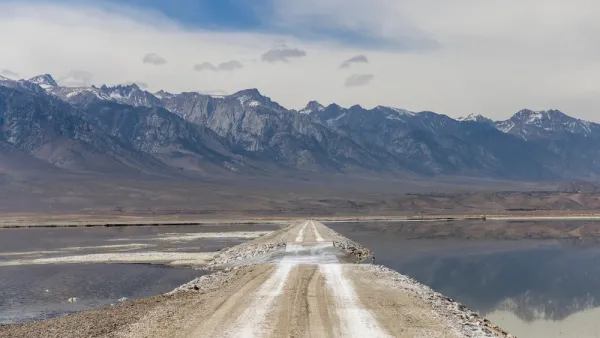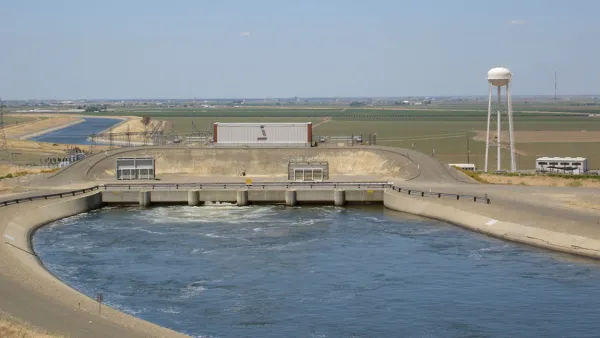After years of feud between Los Angeles and the Great Basin Unified Air Pollution Control District, a more sustainable deal has been reached to eradicate the toxic dust storms plaguing Owens Valley.
Ever since the early 1900s, Los Angeles has been trying to find water to quench the thirst of the growing metropolis. In 1913, Owens Lake, a now-dry lake between the Sierra Nevada and Inyo Mountains, was the source of Los Angeles' early aqueduct to supply water. That only lasted until the mid-1920's, when the lake dried up and began causing toxic dust storms in the region.
According to a Los Angeles Times article by Louis Sahagun, for years due to liability from the Clean Air Act, the Los Angeles Department of Water and Power, "has flooded most of the 110-square-mile lake bed to prevent choking dust storms in the valley that left residents suffering from asthma and other respiratory ailments."
Now, the new method uses "tractors to turn moist lake bed clay into furrows and basketball-sized clods of dirt. The clods will bottle up the dust for years before breaking down, at which point the process will be repeated. The method was first tested in the early 1990s, then tabled out of concern the furrows and clods would disintegrate after a few rains. Two years ago, the DWP resurrected the idea and tested it on several acres of lake bed, but on a much larger scale, with furrows 2 to 3 feet deep. The results showed promise, provided the treated area has clay soil and flooding infrastructure in place."
The new method will go in place in December this year and save about three billion gallons of water in the first year and ten billion gallons three years after that. In addition, this new method will only cost "DWP customers about $1 million per square mile — three times less than shallow flooding. The cost of reducing dust with gravel, which has been applied to swaths of the lake bed, is about $25 million per square mile, officials said."
FULL STORY: New dust-busting method ends L.A.'s longtime feud with Owens Valley

Analysis: Cybertruck Fatality Rate Far Exceeds That of Ford Pinto
The Tesla Cybertruck was recalled seven times last year.

National Parks Layoffs Will Cause Communities to Lose Billions
Thousands of essential park workers were laid off this week, just before the busy spring break season.

Retro-silient?: America’s First “Eco-burb,” The Woodlands Turns 50
A master-planned community north of Houston offers lessons on green infrastructure and resilient design, but falls short of its founder’s lofty affordability and walkability goals.

Test News Post 1
This is a summary

Analysis: Cybertruck Fatality Rate Far Exceeds That of Ford Pinto
The Tesla Cybertruck was recalled seven times last year.

Test News Headline 46
Test for the image on the front page.
Urban Design for Planners 1: Software Tools
This six-course series explores essential urban design concepts using open source software and equips planners with the tools they need to participate fully in the urban design process.
Planning for Universal Design
Learn the tools for implementing Universal Design in planning regulations.
EMC Planning Group, Inc.
Planetizen
Planetizen
Mpact (formerly Rail~Volution)
Great Falls Development Authority, Inc.
HUDs Office of Policy Development and Research
NYU Wagner Graduate School of Public Service




























